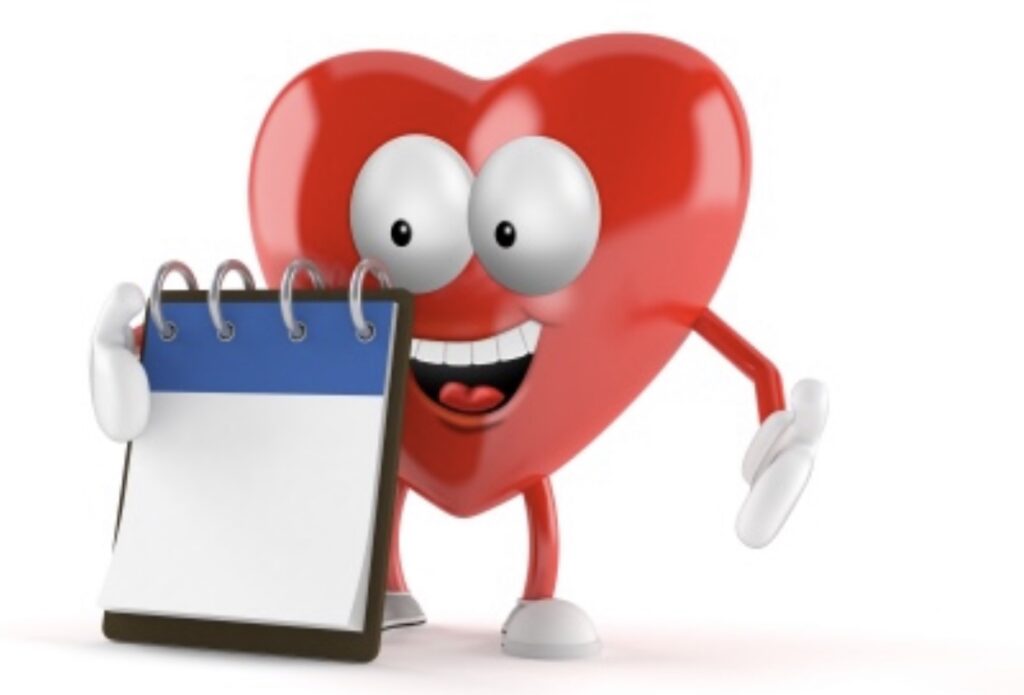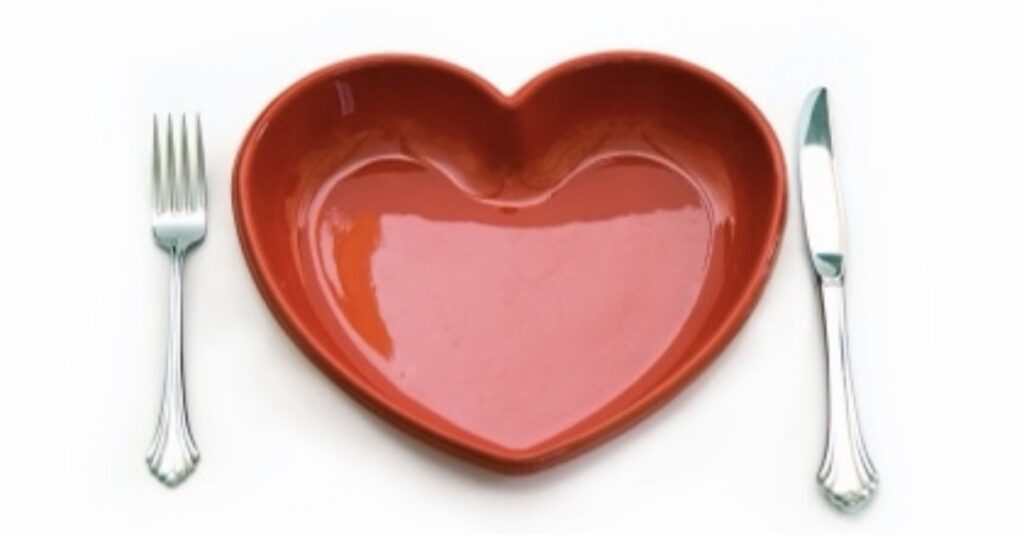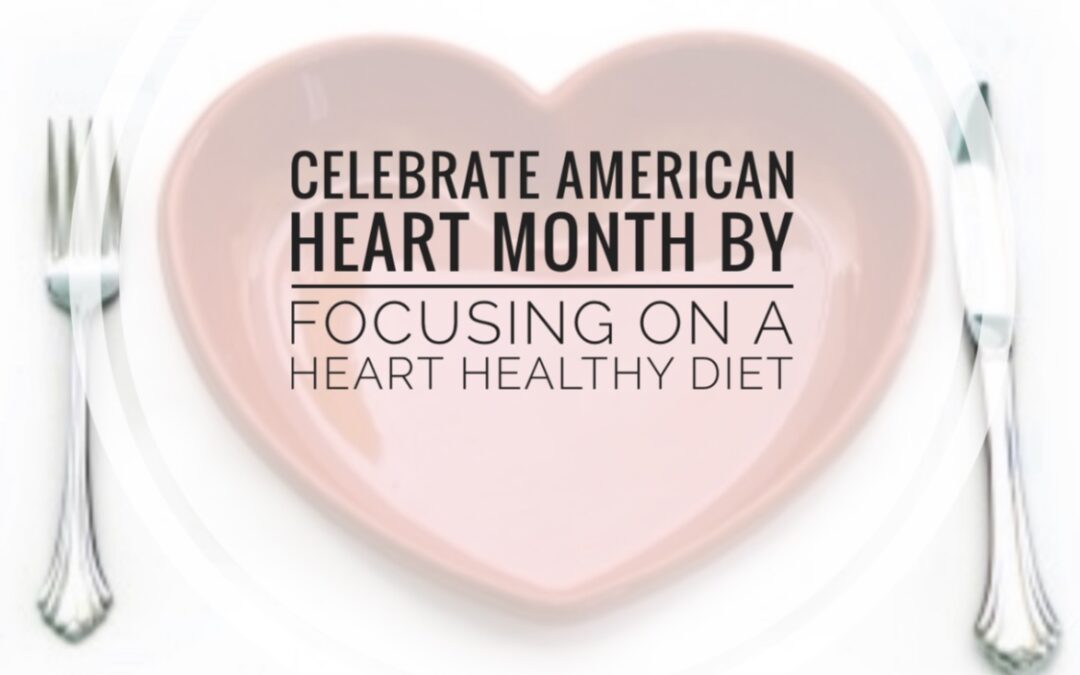February is American heart month – the perfect time to discuss the role that a heart healthy diet and nutrition play in reducing cardiovascular disease risk.

February is American heart month! I’m not referring to Valentine’s day or that special person that makes your heart skip a beat. I’m talking about the heart that pumps your blood and literally keeps you alive. That mighty organ, along with the entire cardiovascular system, plays a huge role in your overall health. And, it just so happens, your diet can play a role in supporting it.
What Is Cardiovascular Disease
Cardiovascular disease is an umbrella term that refers to a number of heart related diseases. Heart disease (also known as heart and blood vessel disease), heart attack, stroke, heart failure, arrhythmias and diseases of the heart valves, are all diseases of the cardiovascular system.
Cardiovascular disease is the leading cause of death in the US. It accounts for 17.3 million deaths per year – a number that’s expected to grow to more than 23.6 million by 2030. One in every three deaths is from heart disease, stroke and high blood pressure. It is the No. 1 killer of American women and men, and it is a leading cause of serious illness and disability.
Adopting a healthy lifestyle, including a healthy diet, is one of the best ways to reduce your risk of cardiovascular disease.
What Is A Heart Healthy Diet?
A heart healthy diet is one that emphasizes a healthy eating pattern, complete with all of the food groups. It includes whole grains, low-fat dairy products, a variety of fruits and vegetables, beans and legumes, lean protein, and healthy fats such as nuts and seeds.
A heart healthy diet limits saturated fats, trans-fats, sodium, red meats and added sugars. It also limits alcohol to no more than one drink per day for woman, and two drinks per day for men.
Patients that have been diagnosed with cardiaovascular disease may have more specific restrictions. The specific heart healthy diet guidelines depend on which type of cardiovascular disease you are suffering from.
Sodium And Cardiovascular Disease
Sodium increases blood pressure, which is a major cause of heart disease and stroke. About 90% of Americans eat more sodium than is recommended for a healthy diet. A study published in 2012 by the Centers for Disease Control (CDC) identified the top 10 sources of sodium in the US diet. While the obvious source of sodium is the salt shaker, that didn’t even make the list. That’s because salting your food at the table is usually not the problem. It’s the foods we eat that provide the majority of the sodium in our diet.
To make sure you don’t exceed your daily sodium recommendations, start to pay attention to the sodium level of your favorite foods. With some simple swaps to slash sodium, you can reduce your intake, and support your cardiovascular health.
Saturated Fat And Cardiovascular Disease
Saturated fat is a type of dietary fat that occurs naturally in many foods, but is found mostly in animal products. Meat and dairy products are leading sources, but baked goods are also a common source. There are also some plant-based foods – like coconut and palm oil – that are high in saturated fats. Plant-based sources of saturated fat, however, do not contain cholesterol and do not pose the same risk of raising cholesterol levels as the saturated fat found in animal products.
Eating foods high in saturated fat can raise the cholesterol level in your blood. In some at-risk people, that can lead to high LDL cholesterol, which can lead to an increased risk of heart disease and stroke.
To support your heart health, try to replace foods high in saturated fat with the healthier unsaturated fats. Examples include dietary fats from nuts, seeds, oils, olives and avocados.
Trans-Fats And Cardiovascular Disease
Trans-fats are another type of dietary fat that can raise unhealthy cholesterol levels. They are naturally occurring in some animal products, but typically only in small amounts. Artificially made trans-fats are the type that receive most of the attention. They are also the type to watch out for in your diet. Once in your body, they act similar to saturated fats.
Artificial trans-fats, which are often referred to as trans-fatty acids, are created in a lab by adding hydrogen to liquid vegetable oils. The result is a more solid form of dietary fat, which is then used by the food industry to change the taste and texture to foods.
The main dietary source of artificial trans-fats is partially-hydrogenated oils. If you start looking, you’ll find those oils in many foods. To determine if a food contains these oils, look at the ingredients list on the food label.

Tips To Cut-Back On Sodium, Saturated Fat and Trans-fat in Foods
To help you cut-back on nutrients that contribute to cardiovascular disease, you’ll need to first know how to identify them. Once you know where they are, you can look for ways to cut-back. Often times, you can find a similar food to replace it. Here are some tips to help.
Flip The Package And Read The Label
To know how much saturated fat, trans-fat and sodium is in your foods, you need to look. The food label will tell you how much of those nutrients are in your food. You just need to flip the package and read the label.
Comparison Shop
Different brands of the same food will have different amounts of sodium. For example, compare your current bread with a different brand. You might be able to save yourself some sodium, saturated fat or trans-fat just by swapping one brand for another.
Eat at home More Often
About 25% of the sodium consumed in the American diet comes from restaurants and fast food establishments. Many restaurant meals will contain your daily sodium recommendations in one meal alone. Keep control over how much sodium you eat, by preparing your own foods, your way.
Swap Processed For Fresh, When Possible
Sodium is used to preserve food and prolong the shelf life. That’s great on some occasions, but not if you are trying to cut back on sodium. Instead of always buying canned, purchase fresh or frozen varieties when possible. Fresh fruits & vegetables have little to no sodium in them and should be included in the foundation of your healthy diet.
Eat Less Total Food, To Eat Less Sodium
It’s much easier to stick to the sodium guidelines if you are sticking to your calories limit ,too. That’s because, sodium is found in so many foods. The more you eat, the more sodium you get!
Athletes and those that participate in extensive activity may need to replace some sodium that is lost in sweat, but it is not an open invitation to eat highly processed foods. Athletes are not immune to cardiovascular disease, so it’s still important to be mindful of sodium consumption.


 Hi, I’m Heather – a registered dietitian, busy mom, consultant, adventure junkie and travel addict who has mastered living healthy on the go. My blog is where I share simple recipes and healthy living tips to help and inspire others to live their best life.
Hi, I’m Heather – a registered dietitian, busy mom, consultant, adventure junkie and travel addict who has mastered living healthy on the go. My blog is where I share simple recipes and healthy living tips to help and inspire others to live their best life.